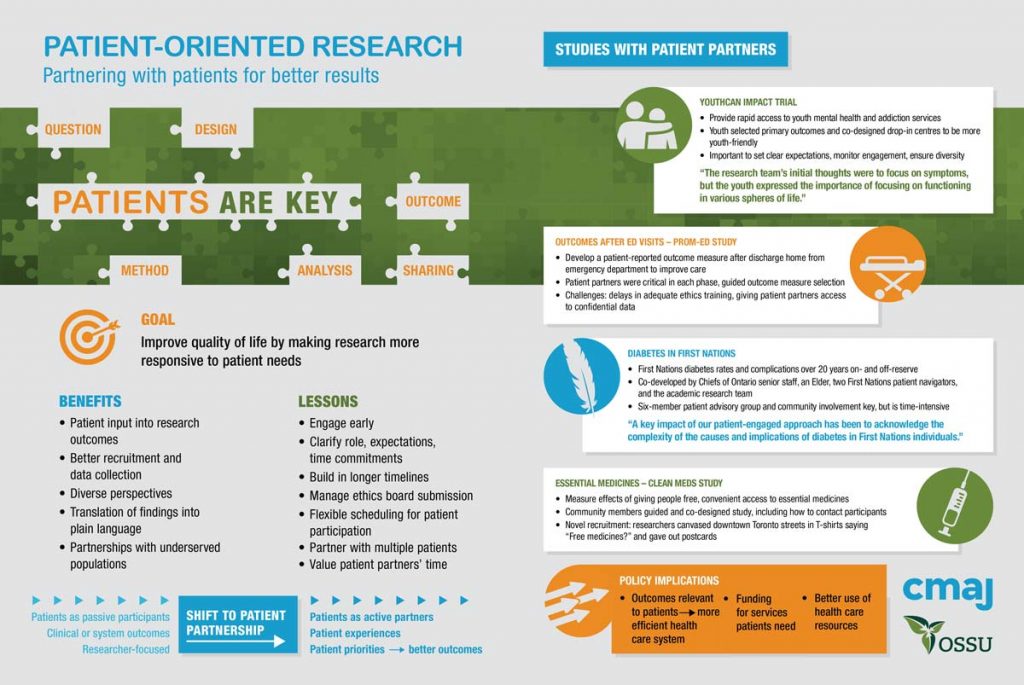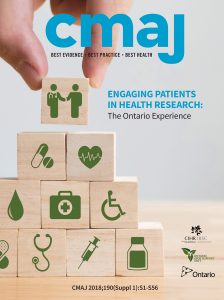Does engaging patients in research projects improve health? A comprehensive collection of 17 innovative OSSU-funded demonstration projects — covering youth involvement in mental health services, suicide prevention, Indigenous health, children with complex medical needs and more — highlights the value of patient engagement in research.
Engaging Patients in Health Research: the Ontario Experience, a special patient-oriented research supplement in CMAJ (Canadian Medical Association Journal), features in-the-trenches experiences, tips and challenges from Ontario health research projects.
The collection, perhaps the first of its kind, is a practical resource to help researchers conduct this innovative research and informs the growing approach of engaging patients, caregivers, family members and communities as partners in health research. Available online and in print, the supplement includes an infographic and podcast with researcher/patient partner conversations. The launch of the Supplement was celebrated at an event held on November 7, 2018 at the MaRS Discovery District. Click here to view the event.
“The innovative, collaborative approach of these projects underscores Ontario’s role as a leader in putting patients first and in seeking ways to improve patient health and health care delivery,” says Dr. Adalsteinn Brown, Chair, OSSU’s Board of Directors. “We expect that IMPACT projects will live up to their names, impacting how we deliver health care in future, from emergency services to mental health, hip fracture care to heart failure care and more.”
Across the projects, patients helped determine study outcomes, create plain language materials, advised on recruitment and more. Challenges included keeping patients engaged, ethics boards delays, regular communication and ensuring patients had the tools and skills to fully participate. Practical tips include flexibility, need for a variety of patient roles, compensation and for researchers to understand and respect patient experiences.

Select highlights:
- An essential medicines list – to ensure diversity in this project to develop a list of free essential medicines, researchers canvassed people on the streets of Toronto as a novel recruitment strategy to attract participants.
- Transporting patients with C-spine injury – patient involvement helped identify broader outcomes including pain and discomfort, time spent in the emergency department and radiation exposure concerns.
- First Nations diabetes project – partnerships with Indigenous communities were critical, with Chiefs of Ontario as project co-leads, placing ownership and control of community data with the communities themselves.
“Engaging patients as partners makes them active, rather than passive, participants whose experience and ideas can enrich research projects,” says Frank Gavin, patient partner and OSSU board member. “We hope this publication will be a resource to anyone interested in conducting patient-oriented research.”

